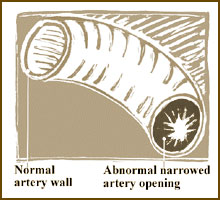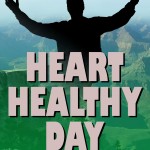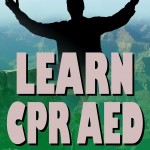What Is Coronary Heart Disease
 Heart disease is caused by narrowing of the coronary arteries that feed the heart. Like any muscle, the heart needs a constant supply of oxygen and nutrients, which are carried to it by the blood in the coronary arteries. When the coronary arteries become narrowed or clogged by cholesterol and fat deposits–a process called atherosclerosis–and cannot supply enough blood to the heart, the result is coronary heart disease (CHD). If not enough oxygen-carrying blood reaches the heart, you may experience chest pain called angina. If the blood supply to a portion of the heart is completely cut off by total blockage of a coronary artery, the result is a heart attack. This is usually due to a sudden closure from a blood clot forming on top of a previous narrowing.
Heart disease is caused by narrowing of the coronary arteries that feed the heart. Like any muscle, the heart needs a constant supply of oxygen and nutrients, which are carried to it by the blood in the coronary arteries. When the coronary arteries become narrowed or clogged by cholesterol and fat deposits–a process called atherosclerosis–and cannot supply enough blood to the heart, the result is coronary heart disease (CHD). If not enough oxygen-carrying blood reaches the heart, you may experience chest pain called angina. If the blood supply to a portion of the heart is completely cut off by total blockage of a coronary artery, the result is a heart attack. This is usually due to a sudden closure from a blood clot forming on top of a previous narrowing.
Cholesterol is a waxy, fat-like substance that occurs naturally in all parts of the body and that your body needs to function normally. It is present in cell walls or membranes everywhere in the body, including the brain, nerves, muscle, skin, liver, intestines, and heart. Your body uses cholesterol to produce many hormones, vitamin D, and the bile acids that help to digest fat. It takes only a small amount of cholesterol in the blood to meet these needs. If you have too much cholesterol in your bloodstream, the excess is deposited in arteries, including the coronary arteries, where it contributes to the narrowing and blockages that cause the signs and symptoms of heart disease.












